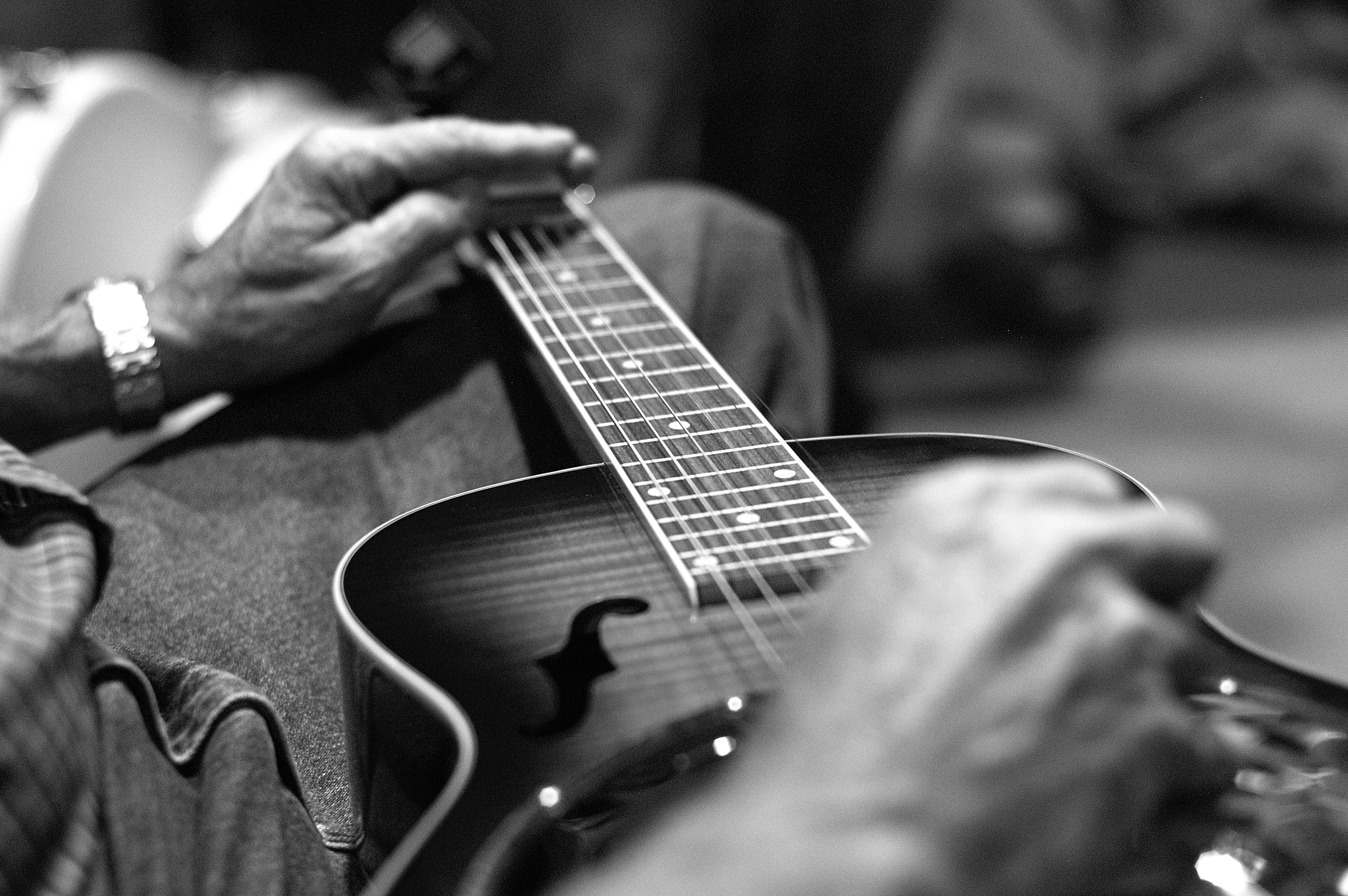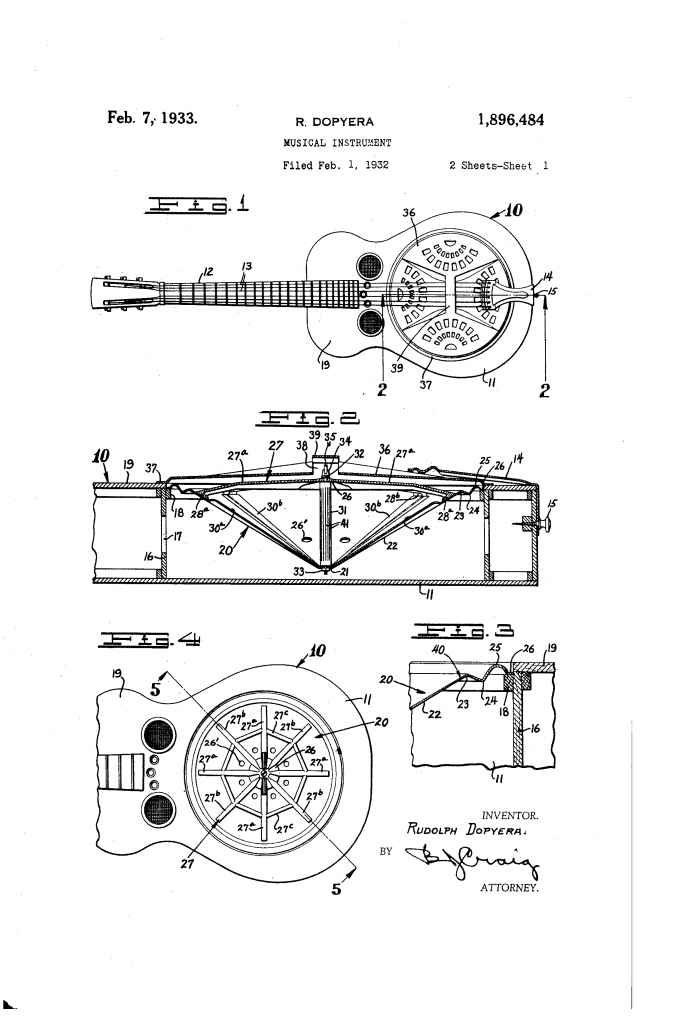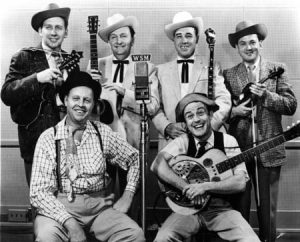When most people hear the word “dobro,” they likely think of a resonator acoustic guitar, probably situated horizontally and played with a slide. But the name actually traces back to Dobro, a company that made resonator guitars in the early 20th century. Like Kleenex or Crescent wrenches, Dobro is a brand name that has become all but synonymous with its product.

But Dobro wasn’t the first manufacturer of resonator guitars. That honor goes to National String Instrument Corporation. In the 1920s, vaudeville performer George Beauchamp approached instrument maker John Dopyera about making a louder guitar that could compete with wind and brass instruments in an orchestra. The result was the first resonator guitar, an innovative design that used three aluminum cones inside the guitar body to amplify the sound of the strings. In 1927, Dopyera and Beauchamp formed National String Instrument Corporation to produce and sell these new instruments.
Using the terms of the era, National produced resonator guitars in both the “Hawaiian” (square neck lap style) and “Spanish” (round neck) styles, as well as tenor and plectrum guitars. It also produced a line of resonator-equipped ukuleles, mandolins, and even violins.
At the end of 1928, John Dopyera was frustrated with his business partners and left National to launch Dobro with four of his brothers. Short for Dopyera Brothers, Dobro also means “good” in several Slavic languages. An early company slogan was “Dobro means good in any language.”

Because he couldn’t use any of National’s patents, John Dopyera set out to design a new style of single-cone resonators, which were louder and easier to produce than tricone models. National also produced single-cone resonator instruments, with strings resting on a “biscuit” bridge at the peak of the cone, with the concave side facing the back of the guitar, though Dopyera claims that Beauchamp stole his patent. In any case, Dopyera designed a new resonator guitar with the concave side of the cone facing the top of the guitar, with the strings resting on an eight-legged “spider” bridge above the cone. The patent for this design was filed in the name of John’s brother, Rudy, because John was afraid that National would try to claim it as their intellectual property. Most Dobro instruments were made with wooden bodies, whereas most National instruments featured metal bodies.
National and Dobro were fierce competitors for a few years, but in 1934, the Dopyera brothers were able to secure a controlling interest in National and merged the two companies into National Dobro Corporation, and the company began to shift its focus to electric guitars. Dobro had granted Regal Musical Instrument Company a license to manufacture resonator instruments, and by 1937 it was the only manufacturer, and the license was officially made exclusive. Regal continued to manufacture and sell resonator instruments under many names, including Regal, Dobro, Old Kraftsman, and Ward. However, they ceased all resonator guitar production following the United States’ entry into World War II in 1941.

The Foggy Mountain Boys
All but lost to history, interest in resonator guitars was rekindled in the mid-1950s, when Burkett H. “Uncle Josh” Graves started playing a lap style resonator guitar with The Foggy Mountain Boys. Bluegrass sliders mostly preferred the Dobro-style instruments, with the inverted cone and wooden bodies. Thanks to the popularity of bluegrass and the extensive use of Dobro instruments within that genre, Dobro became basically synonymous with resonator guitar, and many people use the name to refer to resonator guitars from any maker.
So what about the Dopyeras? The history of the brothers and their various companies is complicated and intertwined, but they launched or contributed to many of the important musical instrument brands of the mid-20th century, including Supro, Valco, Airline, Hound Dog, and OMI.
In recent years, a renewed interest in vintage instruments and early American music has led to the revival of many of the aforementioned brands. National Reso-Phonic Guitars, launched in 1989, produces several fine reproductions of pre-war National Instruments. (We carry many of them at Elderly Instruments.) The Regal name has been revived as a resonator guitar brand under Saga Music (also available at Elderly). Gibson acquired the Dobro name in 1994 and uses it on their line of Epiphone resonator guitars.
When most of the Dopyera brothers moved from California to Chicago in the mid-1930s, John Dopyera remained on the West Coast, where he continued to build instruments. He was actively tinkering and playing music into his 90s and ultimately registered over 40 patents. John Dopyera died in 1988 at the age of 94. While he passed away in relative obscurity, his legacy lives on in the instruments he invented and his many musical innovations we now take for granted.
Resources:
National Guitars official website
National/Dobro History at Chasingguitars.com
Pre War Dobros examined in new book at Bluegrasstoday.com
A Brief History of Bluegrass Music at Bluegrass Heritage Foundation
Palm Trees, Senoritas….and Rocket Ships! by Mark Makin
